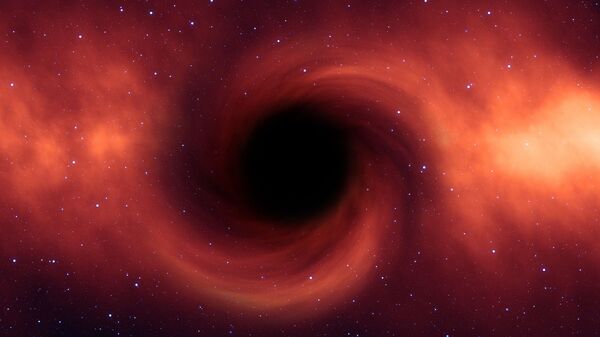The black hole in a binary system called J05215658 that is located about 10,000 light years away in the outer edge of the Milky Way’s disk is around 3.3 times as massive as the Sun, according to the study. The researchers have yet to confirm its exact mass; however, black holes so small had previously escaped detection – mostly because no one knew how to look for them.
“It’s always interesting in astronomy when you look in a new way, and you find a new type of thing,” the study’s lead author Todd Thompson, a professor of astronomy at The Ohio State University, told Vice. “It makes you think that all your ways of looking before were biased.”
Most known observable black holes are about five to 15 times as massive as the Sun, as they are simply easier to spot. When they closely orbit stars in binary systems, the holes pull material off their companions. This accretion process emits luminous X-ray radiation that is observable to telescopes. Black holes that are only about two to five times as massive as the Sun, assuming they exist, do not seem to produce this X-ray signature, making them basically invisible to scientists.
“I was specifically interested in finding these non-interacting systems, the dark unknown and unseen population that must be out there,” Thompson said.
Scientists are still not sure just how massive a star has to be to become a black hole after it explodes into a supernova, or if there is, perhaps, an intermediary process in which a star temporarily becomes a neutron star, like stars with small masses, and then evolves into a black hole.
“We’ve wondered whether there’s anything there between the most massive measured neutron stars, which are about 2.1 times the mass of the Sun, and the least massive well-measured black holes, which are at five solar masses,” Thompson explained. “So, there’s this gap.”
In order to detect these holes, Thompson’s team screened observations of about 100,000 stars in the Milky Way using the Apache Point Observatory Galactic Evolution Experiment (APOGEE). They searched for signs of stars in binary systems with black holes in much the same way that some exoplanet researchers detect worlds around other stars – by observing if the stars appear to be gravitationally influenced by a nearby object.
The researchers then used data from the All-Sky Automated Survey for Supernovae (ASAS-SN) to further refine the search. “By combining those two datasets, in literally one day, we found this star,” Thompson said. “That turned out to be an incredibly efficient way of finding this interesting object.”
While 3.3 solar masses is the most likely estimate presented in the study, the team believes the J05215658 object could potentially be anywhere from 2.5 times to about five times as massive as the Sun. A few other black holes have been discovered with error margins that overlap with this range, so to declare this object as the smallest black hole ever found it will take more time – and measurements.
“If it is confirmed at 3.3 solar masses, it would be very peculiar and the lowest-mass black hole,” Thompson said.
The team is now aiming to use the technique pioneered by Thompson and his colleagues in order to determine whether there are other missing black holes waiting to be discovered.



